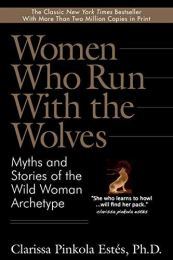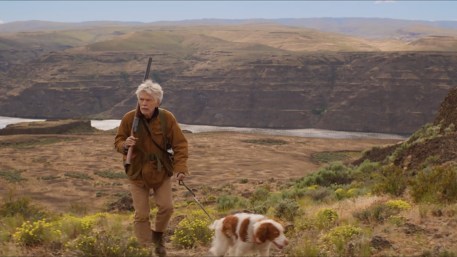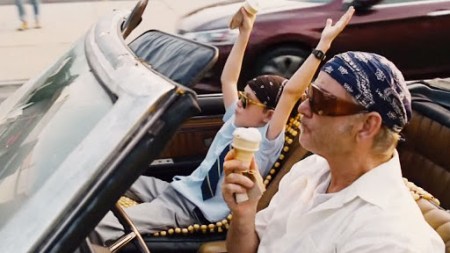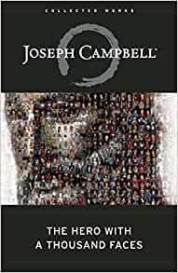Archetypal Character Arcs, Pt. 20: The Flat Archetype of the Elder
 Within a Positive-Change Arc, an Impact Character is the character (or characters) who represents the thematic Truth and its potential to “impact” and change the protagonist. However, within a Flat Arc, the protagonist is the Impact Character. As we delve deeper into the Flat archetypes of the life cycle’s Third Act, we begin to see more and more definitely how “impactful” the archetypes of old age can be.
Within a Positive-Change Arc, an Impact Character is the character (or characters) who represents the thematic Truth and its potential to “impact” and change the protagonist. However, within a Flat Arc, the protagonist is the Impact Character. As we delve deeper into the Flat archetypes of the life cycle’s Third Act, we begin to see more and more definitely how “impactful” the archetypes of old age can be.
Indeed, we are most familiar with the Flat archetypes of Elder and Mentor for the very reason that they commonly appear in younger Change Arcs as important Impact Characters. We are most likely to recognize the Mentor as a staple within the Hero’s Journey, but the preceding Elder archetype is no less viable or important, even though it may be a bit more prosaic.
The Elder is the “resting” archetype that lives in between the tremendously transformative Change Arcs of the King—which concluded the cycle’s Second Act as the final “mature” or “adult” arc—and the Crone—which as the first of the two “elder” or “old-age” archetypes in the Third Act will signify the character’s graduation into true elderhood. While the subsequent Mentor may be more proactive in guiding the young up-and-coming protagonists into the next generational cycle, the Elder is no less influential in providing crucial guidance and enacting important change in surrounding characters.
The Elder: Making Peace With DeathPrevious Arc: King
Subsequent Arc: Crone
Subsequent Possible negative Archetypes: Hermit (passive); Wicked Witch (active)
Essentially, the Elder is the “resting” form of the Crone. As such, this character is in a state of integration after the tremendous trials and sacrifices of the previous King Arc, which ended with a self-sacrificial “retreat” into the “elder realm.”
We can clearly see the Elder in the beginning of the Crone’s First Act when the Elder is yet undecided about whether to answer the next Call to Adventure and embark upon a further transformation. In this period, and the entire resting stage prior to it, the Crone, and therefore the Elder, can be see have retreated from the world.
Symbolically, the Elder lives apart from the Kingdom, in a secluded Hut in the woods. More prosaically, this is a character who has retired from the hustle-bustle of commercial, political, or social concerns. Again symbolically, the character is withered, perhaps physically infirm or limited. He or she is no longer at the center of the whirling challenges of power and relationship.
Assuming this character has successfully and willingly completed the previous King Arc, then this current state is one to which he or she is at least partially reconciled. It is, however, totally possible for a character to simply be “dumped” into this phase by the inevitable encroachment of old age. Either way, the character is understandably in a phase of grief, recovery, and integration.

Women Who Run With the Wolves by Clarissa Pinkola Estes (affiliate link)
But within this character—as the subsequent Change Arcs of Crone and Mage shall ripely prove—there is, perhaps not-so-surprisingly, what Clarissa Pinkola Estés refers to in Women Who Run With the Wolves as “fecundity.”
The queen mother/crone … figure represents many things, among them fecundity, the vast authority to see into the tricks of the predator, and the ability to soften curses. The word fecundity, which sounds like drum talk when said aloud, means more than fertile, it means pregnable, the way soil is pregnable. She is that black soil glittering with mica, black hairy roots, and all the life that has gone before, broken down into a fragrant sludge of humus. The word fertility has behind it the sense of seeds, eggs, beings, ideas. Fecundity is the basal matter in which seeds are laid, prepared, warmed, incubated, saved. This is why the old mother is often called by her oldest names—Mother Dust, Mother Earth, Mam, and Ma—for she is the muck that makes ideas happen.
This deep black soil is the treasure of a life’s work. However changed the Elder’s circumstances—from Palace to Hut—this is a character who has lived a full and good life. This is a character who has seen and met many challenges—and, if he or she is a true Elder, has overcome those challenges with grace, courage, and wisdom.
In short, this is a character with a lot to teach just about everyone else. In no small part, it is in this teaching—this ability to impact the coming generation—that the Elder will find personal healing and the strength to embark on the tremendous Change Arcs of the Third Act.
The Elder’s Normal WorldWe see the Elder in the seemingly scary old woman—the Baba Yaga—who lives in a hut deep in the woods and hangs dead cats and other horrors outside her house. The children dare each other to look through her window, convincing themselves she is a witch. And she may play along, in part as jest, in part as unspoken test, and in part because she’s not so sure she wouldn’t just rather be alone.
Estés writes evocatively:
She is outside the seeming happy families of the villages, outside the warm room and out in the cold; that is her life now. This becomes the living metaphor for women on the journey. We begin somehow not to feel a part of the life that carnivals about us. The calliope seems far away, the barkers, the hucksters, the whole magnificent circus of outer life wobbles and then falls to dust as we descend farther into the underworld.
We can see this in many stories about the brave young person—the budding Maiden or Hero—who dares to keep coming back to visit the grumpy oldster, as in Shirley MacLaine’s The Last Word and Bill Murray’s St. Vincent, among many others.

It isn’t, of course, strictly necessary that the Elder live alone or even apart from society. This is merely a symbolic representation of how the Third Act of life is separated from the previous two acts in definite but sometimes vague ways. It is totally possible that the Elder character lives with the children or grandchildren or other relatives.
A good example is found in Truman Capote’s autobiographical stories, such as “A Christmas Memory,” about his childhood friendship with an elderly cousin while both were living with and dependent upon other “less understanding” relatives. In these stories, the cousin isn’t stereotypically “grumpy.” But she is clearly removed from the bustle of “grown-up life,” just as she has also clearly not taken her next transformation into the profound understanding that comes with the following Crone Arc.

If you are to tell a Flat-Arc story about an Elder, what is important is that the character’s (probably self-imposed) isolation or separation is breached in some way. Other characters, after all, have to “get in” in order to be transformed by the Elder’s wisdom. (If the story is about an older protagonist on a lonely quest—such as in David Guterson’s novel East of the Mountains-–then it is probably not a Flat Elder story, but rather a Crone’s Change Arc.)

Why is it that the Elder has different or more thematic Truths to teach than the previous Flat archetypes of Parent and Ruler? Although, obviously, the Elder has lived longer and inevitably picked up a few more clues along the way, the real difference is that the Truths of the Third Act are of a different caliber than those of the previous two acts, however much they may be related.
Estés speaks of the paradigmatic difference:
In the topside world, all is interpreted in the light of simple gains and losses. In the underworld or other world, all is interpreted in light of the mysteries of true sight, right action, and the development of becoming a person of intense inner strength and knowing.
Having just completed the King Arc, the Elder has most recently assimilated a Truth that might be phrased as: “Spiritual strength and physical strength are not always the same. Indeed, sometimes one must be willing to sacrifice the latter for the former.”
More than that, however, the thematic Truth presented in an Elder story will largely depend on whatever it is the younger Change-Arc character needs to learn. At this point, the Elder has done it all (or almost all), at least archetypally speaking. Whatever practical or relational problem the younger character is struggling with will be one the Elder knows the answer to, if only by dint of time and experience.
Even in stories such as St. Vincent, in which the character has clearly not aced all his previous arcs and is in many ways a seeming failure, he still knows what the young Change-Arc character needs in order to advance.

How the Elder Creates Change in Supporting Characters
In many ways, the Elder is an obvious archetype. The idea of the old mentoring the young is familiar to us all. And yet in other ways, the profundity of this archetype has largely faded from modern (or at least Western) culture. Elders are no longer revered as they once were—and I daresay this is largely because few elders are truly Elders, in the archetypal sense of someone who has completed all the initiations and arcs up to this point in the life cycle.
Wherever we encounter true Elder energy, we encounter something very special. We encounter the presence of a person who has the ability to not just guide or teach the younger generation, but to act as the very initiatory force that allows these younger characters to embark upon and complete their own journeys. (It is no accident that it is often, and most significantly, the subsequent impact archetype of the Mentor who “calls” the Hero to the Quest.)
Many of our current Elder stories feature protagonists, such as Bill Murray’s Vincent, who have not fully reached this stage archetypally and who therefore can offer only limited guidance and mentorship to their youngsters. Usually they are still trying to sort through their own unfinished business from their Second-Act arcs. These stories certainly have their place, since they reflect reality and indeed may help us process our current struggles with initiatory arcs. However, a true Elder story is one in which the Elder possesses more than just common-sense advice gleaned from a life’s experience, but more specifically a wisdom so deep it is in fact a latent power.

The Hero With a Thousand Faces Joseph Campbell (affiliate link)
In The Hero With a Thousand Faces, Joseph Campbell recounts the beautiful Irish tale of four brothers who tried to convince an old hag to give them water from her well. The three older brothers fail her tests because they fail to understand or respect the simple truth of her well-earned magnificence. Only the youngest brother, Niall, succeeds and earns the right to be initiated by this true Elder:
Types of Story That Feature an Elder Protagonist
Olioll, Brian, Fiches [the older brothers], likewise, went on the quest and equally attained to the identical well. Each solicited the old thing for water, but denied her the kiss [she requested as payment].
Finally, it was Niall who went, and he came to the very well, “Let me have water, woman!” he cried. “I will give it,” said she, “and bestow on me a kiss.” He answered: “forby giving thee a kiss, I will even hug thee!” Then he bends to embrace her, and gives her a kiss. Which operation ended, and when he looked at her, in the whole world was not a young woman of gait more graceful, in universal semblance fairer than she: to be likened to the last-fallen snow lying in trenches every portion of her was, from crown to sole; plump and queenly forearms, fingers long and taper, straight legs of a lovely hue she had; two sandals of the white bronze betwixt her smooth and soft white feet and the earth; about her was an ample mantle of the choicest fleece, pure crimson, and in a garment a brooch of white silver; she had lustrous teeth of pearl, great regal eyes, mouth red as a rowanberry. “Here, woman, is a galaxy of charms,” said the young man. “That is true indeed.” “And who art thou?”‘ he pursued. “Royal Rule am I,” she answered, and uttered this:
“King of Tara! I am Royal Rule…
“Go now,” she said, “to thy brethren, and take with thee water moreover, thine and thy children’s for ever the kingdom and supreme power shall be…. And as at the first thou hast seen me ugly, brutish, loathly—in the end, beautiful—even so is royal rule: for without battles, without fierce conflict, it may not be won; but in the result, he that is king of no matter what shows comely and handsome forth.”
As with all of the Third-Act archetypes, it becomes more and more difficult to find well-executed examples that feature these characters as protagonists. We are much more likely to find them showing up as supporting Impact Characters in a younger protagonist’s story.
These stories can span the gamut of possibilities, depending upon the type of change the younger character is undergoing. Most often, we find the Elder interacting with a Child (who as a fellow Flat archetype may also ingenuously offer certain truths to the Elder, which will aid the older character in the necessary healing and integration before the new trials of the Crone Arc), a Maiden, a Lover, a Parent, or a Queen.
The Elder isn’t likely to interact with a Ruler or King, simply because the Elder is so recently and traumatically graduated from these archetypes. To get involved with figures of power would likely cause a regression. The Elder has just left the Palace; the Hut is where the Elder needs to be for the time.
The Elder also isn’t likely to interact with the Hero, since a Hero showing up at her door often signifies the Elder’s own Call to Adventure within the Crone Arc. As we’ve seen, the Hero will very often accompany the Crone on her descent to the Underworld (such as in Pixar’s Up).

As with most of the Flat archetypes, the Elder is likely to feature in a “domestic” story. Unlike the Change Arcs, which are at least symbolically about threats to the Kingdom (i.e., the “threat” of impending and necessary change), the Flat archetypes represent characters dealing with the mundane, if no less dramatic, trials of daily life.
Indeed, some of our Elders’ most potent work is not even that of undergoing their own remaining transformation arcs, but also simply offering back all they have earned and learned to guide the transitions of the younger arcs who follow in their footsteps.
Examples of the Elder:Examples of the Elder archetype include the following.
John Jarndyce in Bleak HouseNinny Threadgoode in Fried Green TomatoesAunt Trotwood in David CopperfieldVincent in St. VincentHarriet in The Last WordSook in “A Christmas Memory”Stay Tuned: Next week, we will finish our exploration of the Flat archetypes with the Mentor.
Related Posts:
Story Theory and the Quest for MeaningAn Introduction to Archetypal StoriesArchetypal Character Arcs: A New SeriesThe Maiden ArcThe Hero ArcThe Queen ArcThe King ArcThe Crone ArcThe Mage ArcIntroduction to the 12 Negative ArchetypesThe Maiden’s Shadow ArchetypesThe Hero’s Shadow ArchetypesThe Queen’s Shadow ArchetypesThe King’s Shadow ArchetypesThe Crone’s Shadow ArchetypesThe Mage’s Shadow ArchetypesIntroduction the 6 Flat ArchetypesThe ChildThe LoverThe ParentThe RulerWordplayers, tell me your opinions! Can you think of any further examples of stories that feature the Elder? Tell me in the comments!Click the “Play” button to Listen to Audio Version (or subscribe to the Helping Writers Become Authors podcast in Apple Podcast or Amazon Music).
___
Love Helping Writers Become Authors? You can now become a patron. (Huge thanks to those of you who are already part of my Patreon family!)The post Archetypal Character Arcs, Pt. 20: The Flat Archetype of the Elder appeared first on Helping Writers Become Authors.




